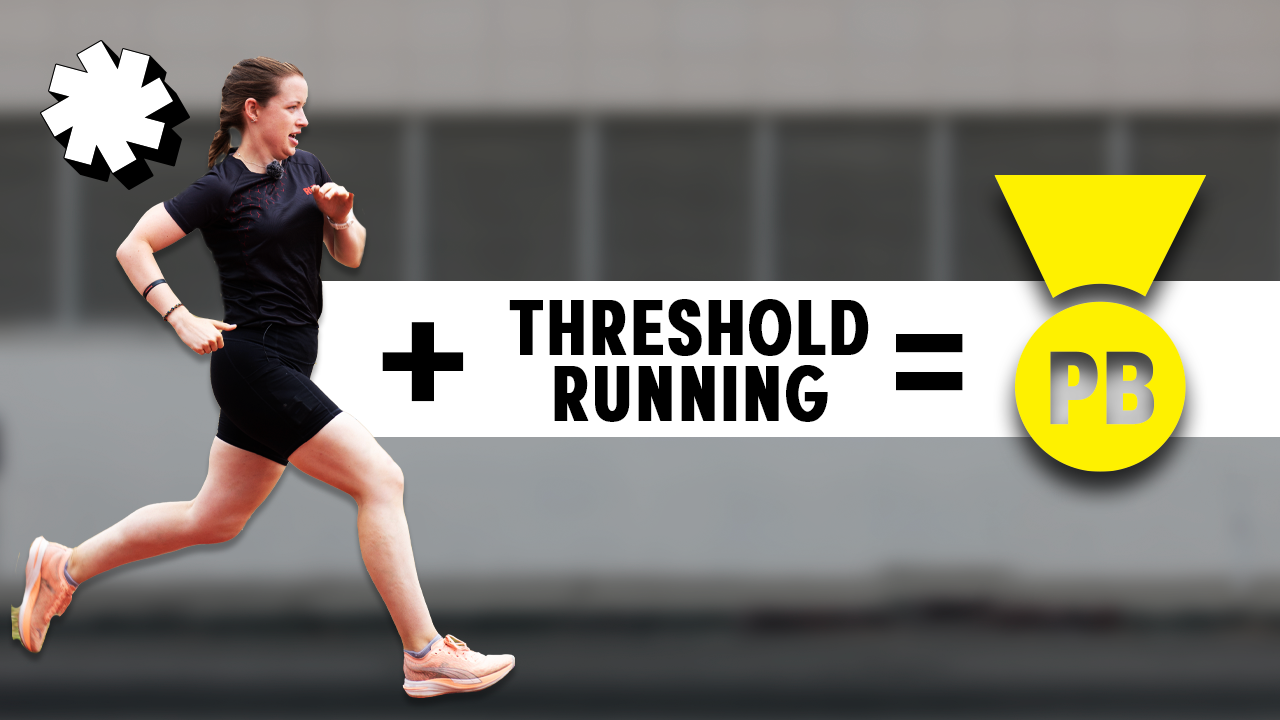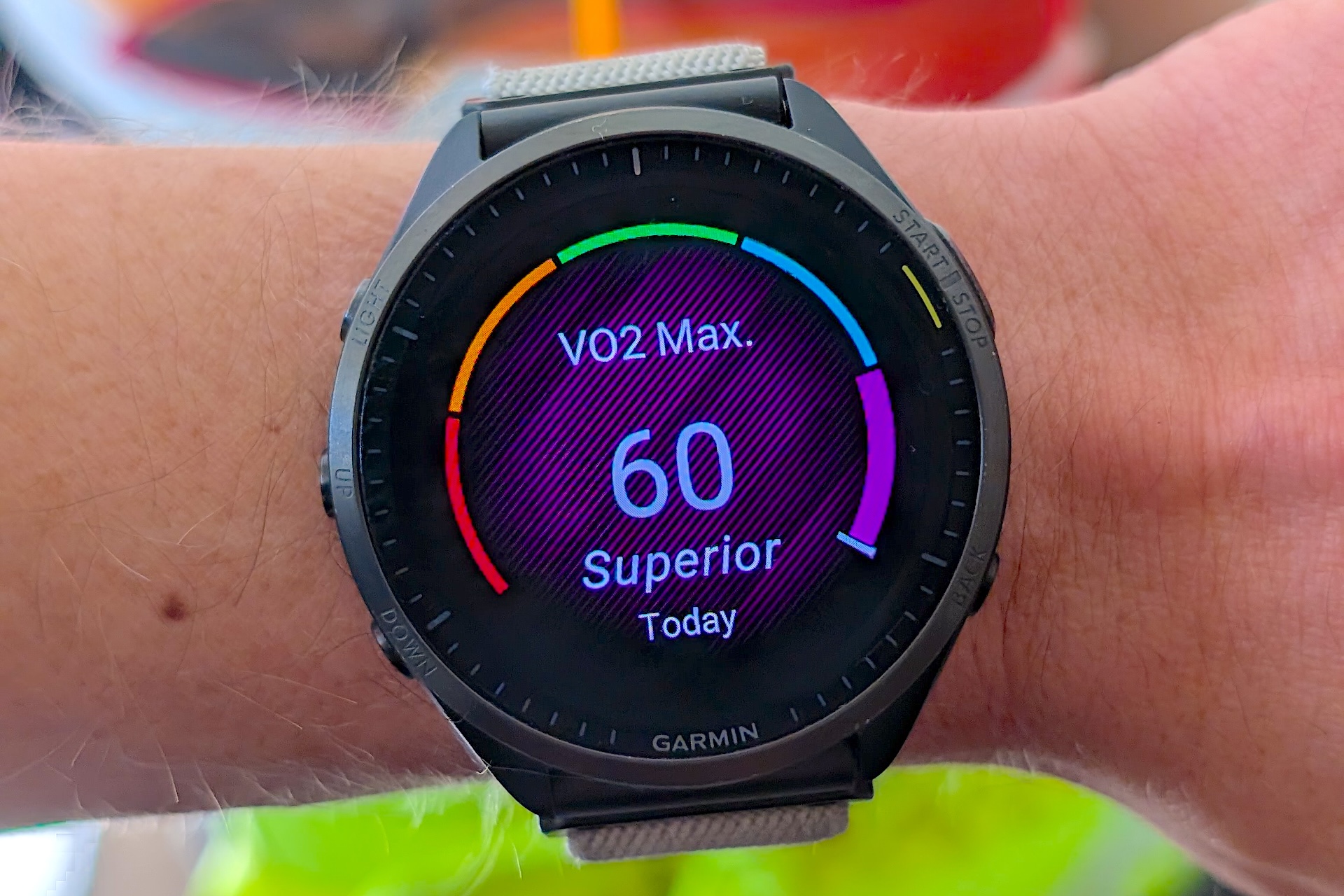What Is A Threshold Run?

Threshold workouts have become a common type of run in recent years, but what is a threshold run and how do you know what your threshold running pace should be?
In this guide to threshold running we cover:
- What is a threshold run?
- What is the lactate threshold?
- How can you find out your lactate threshold?
- Is lactate the same as lactic acid?
- Why should runners do threshold runs?
- What is a double threshold run?
- Good examples of threshold run workouts
- Threshold run vs tempo run
WHAT IS A THRESHOLD RUN?
A threshold run is a comfortably hard effort, typically broken into shorter intervals of 2-20 minutes, that are run at a pace which is just below your lactate threshold.
Of all the runs, it might be the most complex to initially master, but it might also be the most important for those looking to better their performances over distances from 5km to the marathon.
WHAT IS THE LACTATE THRESHOLD?
Let’s start with the science as if you know what’s happening inside your body then this all makes more sense, and you can get a better feel for threshold running.
When we run, our body breaks down glycogen and uses it as energy, with lactate produced as a waste byproduct of that process. Our body is able to effectively clear the lactate when we’re exercising at a low to moderate intensity, but as the effort or duration increases, the lactate builds up faster than the body can get rid of it. When it passes a certain level, known as our lactate threshold, it becomes very hard to maintain the effort.
If you know your lactate threshold point, then you can exercise to just below that level, which essentially becomes the fastest pace you can maintain before a point of rapid exhaustion sets in. Training there is a great way of improving your speed endurance.
HOW CAN YOU FIND OUT YOUR LACTATE THRESHOLD?
Your lactate threshold is individual to you, and it can change over time and as you get fitter – essentially your body gets more efficient at clearing lactate at faster paces.
- You can very accurately measure your lactate threshold through tests in a lab (which cost around £150)
- Runners can buy a personal lactate testing kit (but these cost over £300)
- Use an online pace calculator like Jack Daniel’s VDOTO2. Just put in a recent personal best, and it’ll suggest your threshold pace
- Garmin users can be guided through a lactate threshold test on their watch (this requires an external heart rate monitor)
- You could use heart rate as a guide, as your lactate threshold is around 90% of your maximum heart rate
- Or try this workout: After a 10 minute warm up, run for 30 minutes at the fastest pace you can sustain for the full 30 minutes. After the run, work out the average pace and average heart rate of the final 20 minutes of that run (so ignore the first 10 minutes). These averages should be just below your lactate threshold.
IS LACTATE THE SAME AS LACTIC ACID?
No, not quite. But lactic acid is something you hear about a lot in terms of the pain we feel in our muscles during intense exercise.
You know we said the body produces lactate as a byproduct of energy production? Technically the first byproduct is lactic acid, but it immediately separates into lactate and hydrogen ions. It’s the hydrogen ions which build up, lower the pH in the muscle, and cause it to feel like it’s burning.
WHY SHOULD RUNNERS DO THRESHOLD RUNS?
By consistently training below your lactate threshold you can improve your body’s capacity to both use oxygen during a hard effort and to clear lactate, which means your maximum pace below that lactate turn point can increase as you get fitter, and you can improve your ability to endure muscle fatigue and run faster for longer.
One great thing about threshold runs is that while they are hard, they don’t push you to exhaustion over shorter reps – an 800m rep at threshold will be slower than an 800m interval. So as these are submaximal efforts, you should find that you are able to recover quicker from them compared to interval sessions of the same volume of running.
WHAT IS A DOUBLE THRESHOLD RUN?
This means doing two threshold workouts in one day – one in the morning, one in the afternoon or evening.
The beauty of a threshold workout is that if you do them properly they are a great exercise stimulus, but they don’t completely deplete or fatigue you. At the end of a threshold workout you should always feel like you can run some more, even if it’s been a hard session.
Double thresholds can work for well-trained athletes as it means they can get a significant volume of faster running done in one day, without needing to do one very large workout, or without taxing the energy systems too much with a lot of fast intervals.
But if you’ve never done them before then build up to it. First of all practise adding a second run and do it at an easy pace, and if you want to add a threshold session then begin with something that’s relatively low volume, like 5 x 2 minutes.
GOOD EXAMPLES OF THRESHOLD RUN WORKOUTS
You want to aim for a maximum of around 30 minutes of threshold running in a session, unless you are specifically doing a longer threshold test or you’re a well-trained runner used to running higher volume. You can do these workouts on the track, treadmill, tarmac or light trails.
All these workouts should come after a warmup of 10-15 minutes, and do some drills and strides as well.
3-8 x 1 mile
A classic threshold workout is one mile repeats (or 1600m). Take a 1-2 minute rest or jog in between. Do the number of reps possible to add up to a total of around 30 minutes of threshold running in the session.
6-12 x 1km
Same as above. Another classic.
10 x 2 minutes
A good baseline threshold workout, or one to try as the second workout of a double threshold day. Run the two minutes in a hard but controlled way. You shouldn’t be gasping for breath at the end, and your heart rate should be elevated but not in the red.
12-16 x 400m
You’ll run these efforts to your threshold pace, not like an all-out interval, so the aim is to keep them controlled. Take a minute rest between each rep.
3 x 3km or 2 x 5km
By starting to run longer reps, your body gets more comfortable pushing beneath your lactate threshold for longer, which can be very helpful in races from 10km upwards. Take a two-minute jog or walk between reps.
THRESHOLD RUN VS TEMPO RUN?
Threshold runs are a specific effort just below your lactate threshold turn point, and these runs are typically shorter and quicker than a tempo run.
Tempo pace is similar to marathon pace, and tempo workouts are longer sustained runs of 15-60 minutes which might be broken into longer reps (3 x 15 minutes, for example).
Threshold runs involve shorter reps (1-15 minutes) and are a little faster than tempo pace.
Want to know more about threshold runs? Here’s Sarah covering everything you need to know about threshold running.



























Running News
Will A Woman Run A Four-Minute Mile? Research Says It’s Possible
Tadese Takele And Sutume Asefa Kebede Win The 2025 Tokyo Marathon!
Boston Marathon 2025 Medal Reveal And Celebration Jacket